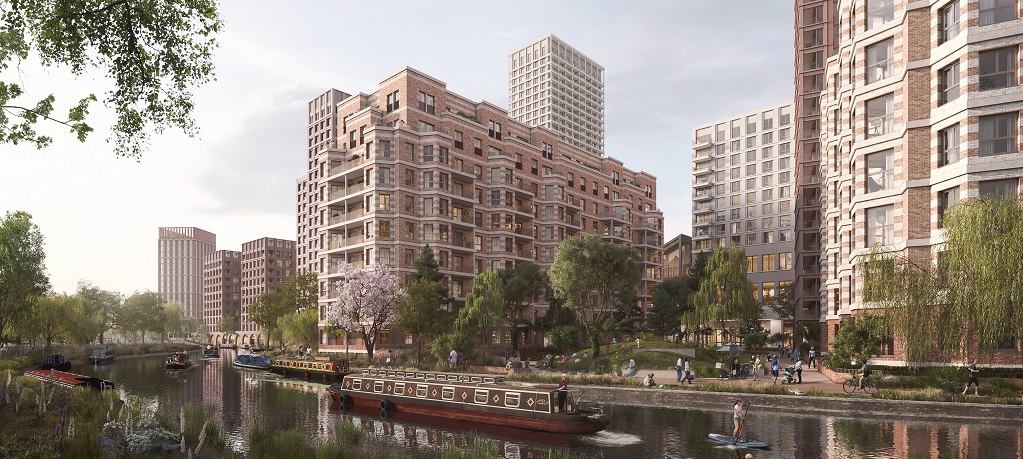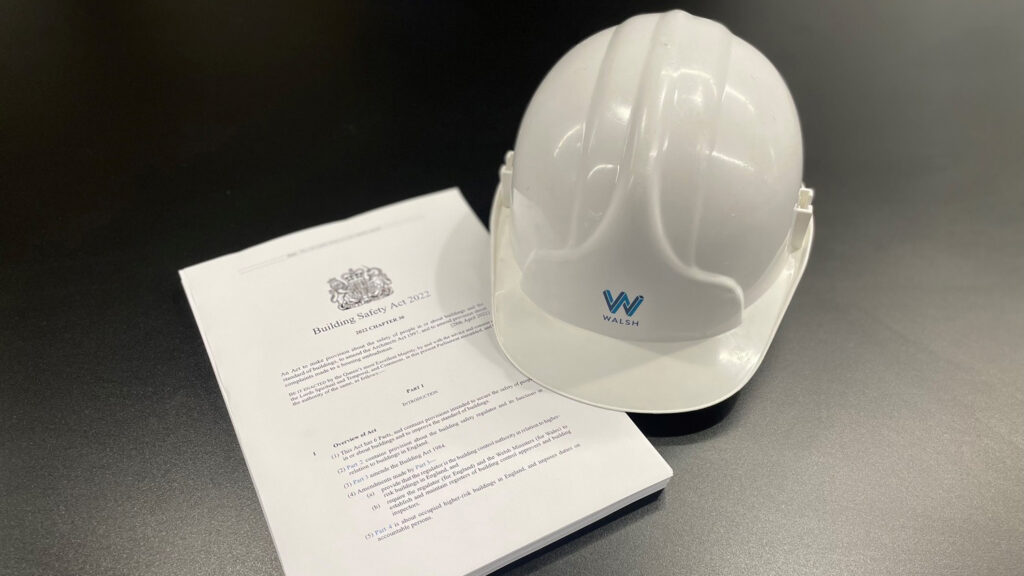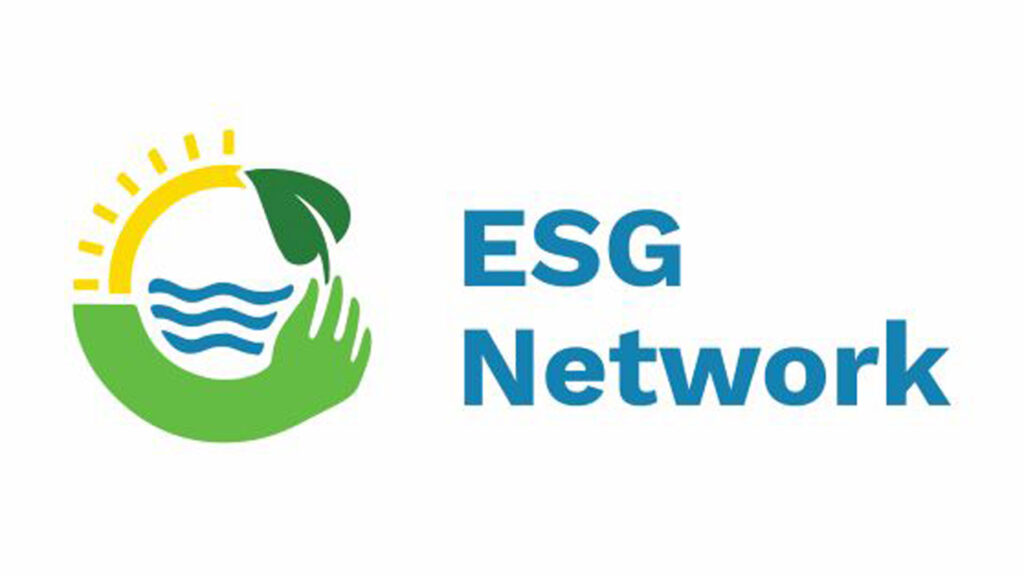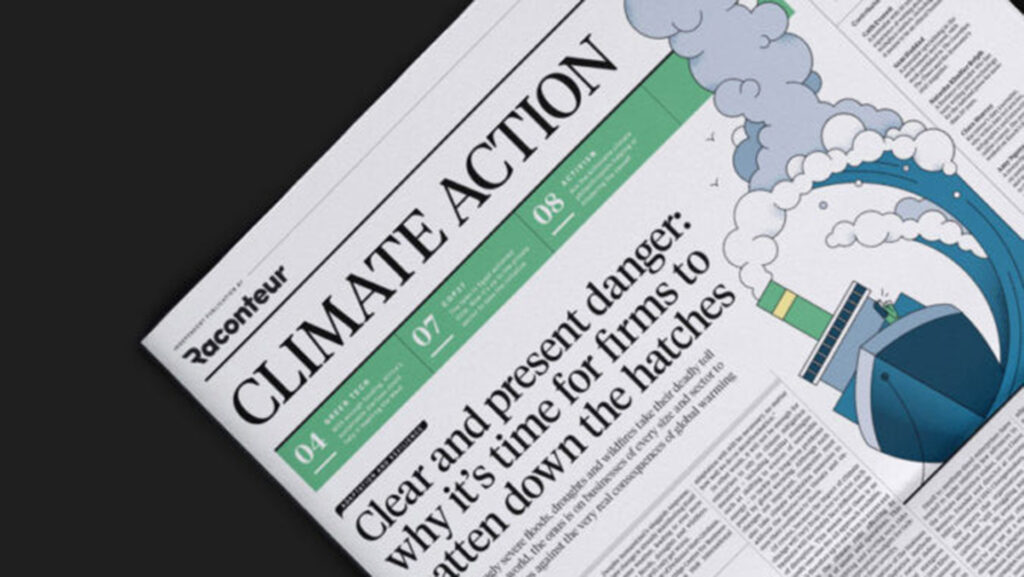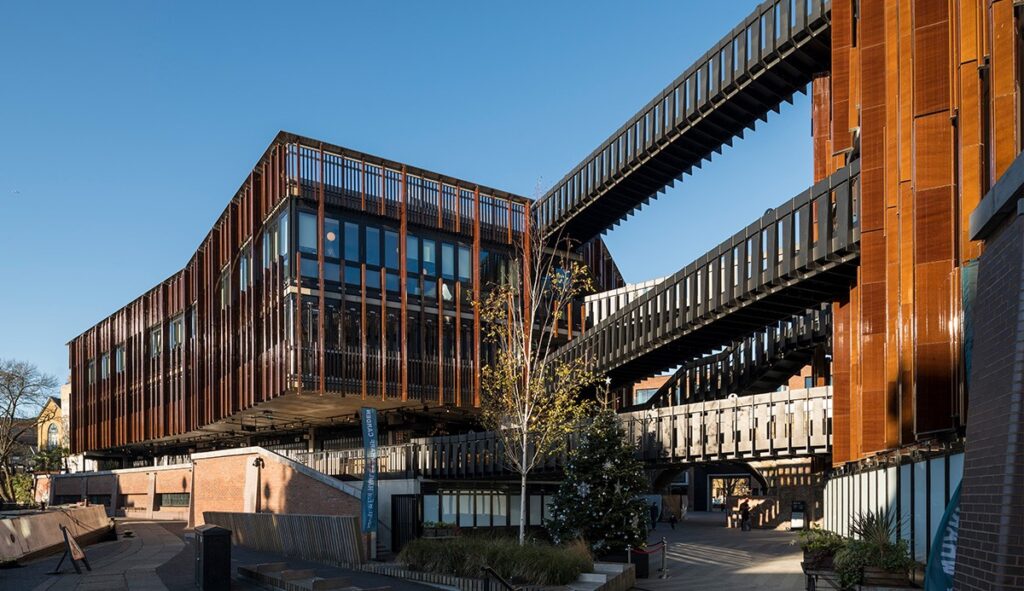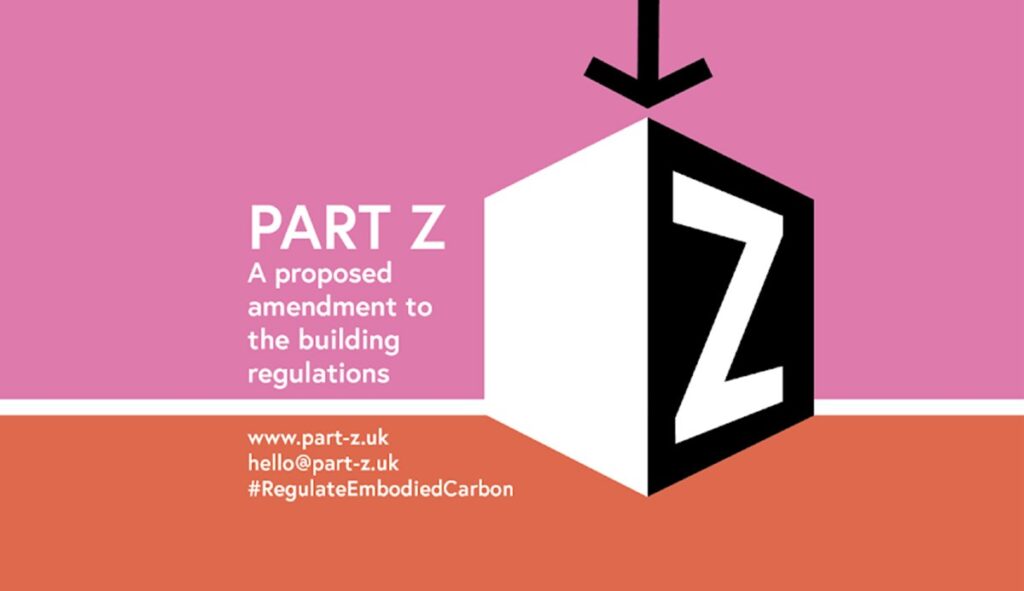Development and environmental concerns are now critically intertwined. Ensuring that the land use for our homes, leisure activities and workplaces is safe is of paramount importance and Geoenvironmental Risk Assessments are an indispensable tool at the early RIBA stages to support this. They act as a crucial first step, meticulously examining whether hidden dangers could lurk on the proposed site, issues that could not only endanger the lives of residents but the viability of the proposed venture.
The History of Humanity is a History of Environmental Contamination
Geoenvironmental Assessments go hand and hand with geotechnical assessment when considering the ground risk on a development site. Human activity has been changing the landscape since before the Romans arrived, but polluting activities ramped up with the industrial revolution and, as with many things, regulation only followed when a lot of damage had already been done.
These days there is a “polluter pays” principle that is governed by a set of overlapping statutory instruments. Essentially, potentially polluting activities require a permit, and the permit holder must demonstrate that they have either not caused any pollution in their activities or have cleaned it up before surrendering their permit.
This approach does not, however, deal with historical and diffuse pollution. Research has shown that urban soils are consistently polluted with toxic chemicals such as lead, arsenic, polycyclic aromatic hydrocarbons, and asbestos fibres. Most sites, even those designated as “greenfield”, will have some amount of anthropogenic ground (ground that has been changed by human activities) at surface level. This is often contaminated with artificial materials, heavy metals, and hydrocarbons of various forms. There are also new and emerging contaminants to consider, such as PFOx aka “Forever Chemicals” which are made up of very strong carbon-fluorine bonds which are extremely resistant to natural degradation in the environment and linked with long-term health issues such as cancers and endocrine disorders. The 2019 film Dark Waters is based on a true story about these chemicals in the environment and worth a watch.
Why is this Contamination so Important if it’s Everywhere?!
A finished development will need to be safe for the intended end users and should not pose a risk to controlled waters such as aquifers, rivers and ponds, off-site neighbours, plants or sensitive habitats during construction or while operational. As pollution can be remobilised during construction, an early stage of the process (RIBA Stages 1-3) is to carry out a tiered risk assessment relating to contamination. This will usually be rolled in with the geotechnical investigation so that we can collect both datasets without the need to duplicate any intrusive works. Geoenvironmental assessments follow the Land Contamination Risk Management (LCRM) first published by the Environment Agency in 2021 replacing CLR11, as well as several other British Standards and industry- or regulator– led guidance documents.
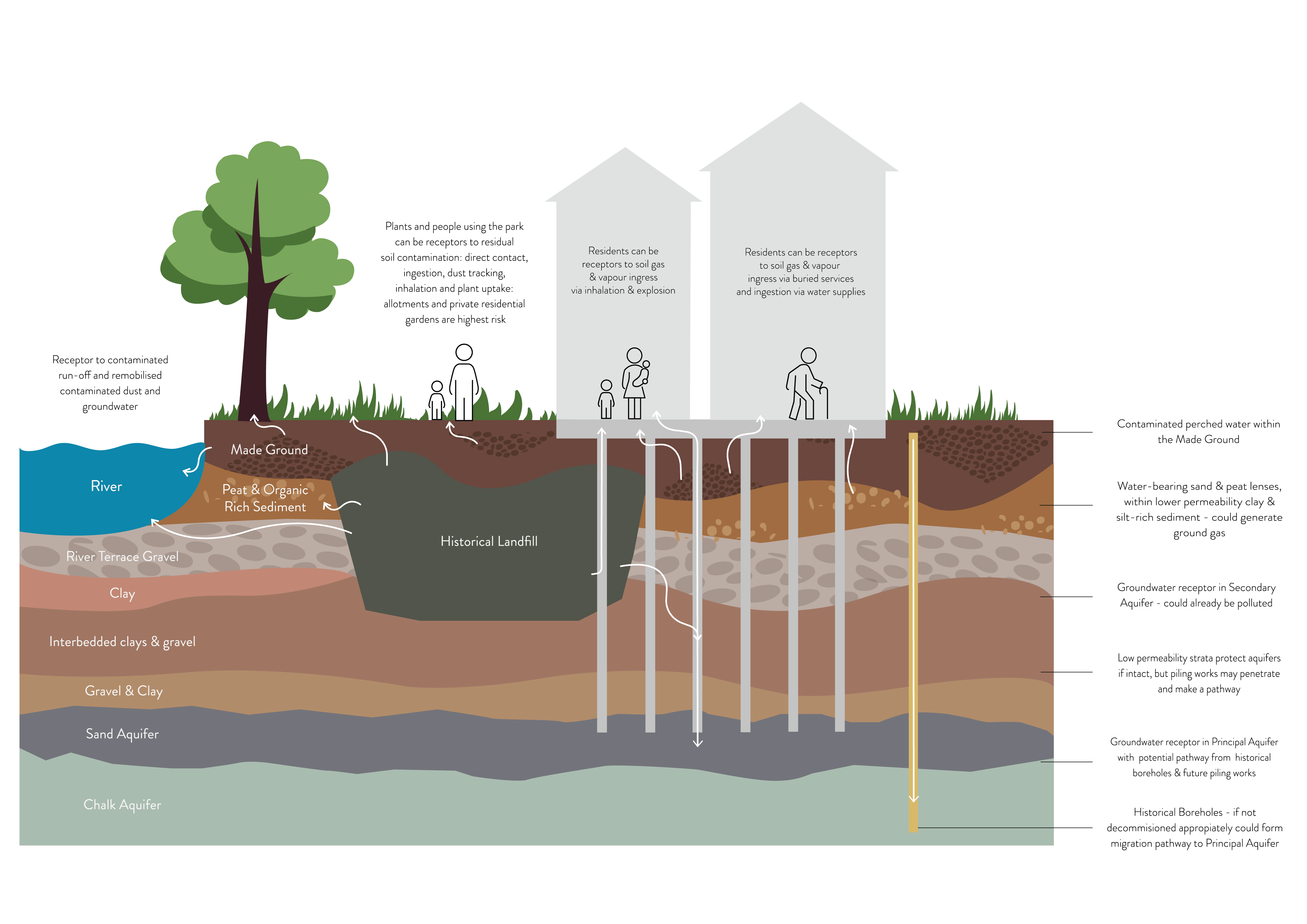
Phases of Geoenvironmental Risk Assessment
Phase 1 – Preliminary Risk Assessment (PRA)
A PRA typically comprises a walkover survey, commissioning an environmental database search and liaising with the contaminated land department of a local authority. We look at historical maps, the local planning portal, plans, books, records, aerial photographs, talk to local people, maybe visit local museums or libraries and read the blogs of local historians to build up a picture of the history of the site and any potential risks.
Phase 2 – Site Investigation and Generic Risk Assessment (GRA)
The outcomes of the Phase 1 PRA are then used to plan an intrusive Site Investigation. We will make holes in the ground to confirm ground conditions and published geology, take samples of soil and water which are sent off for chemical (and sometimes biological) testing, and install groundwater and ground gas monitoring wells.
Ground gas can be generated when introducing oxygen into organic-rich naturally occurring soils. It can be released when naturally gas-bearing rocks are disturbed during construction activities like piling and foundation works. It can also be generated by anthropogenic soils such as ‘Made Ground’ and landfilling. Ground gas is typically methane which can be an explosive hazard and / or carbon dioxide which can an asphyxiation hazard. Occasionally there may be conditions that allow other gases and vapours such as hydrogen sulphide to be produced that are toxic at an even lower concentration.
When necessary, we typically carry out gas monitoring for around three months although it can go on for years! Once we have gathered all the test results, we write our Phase II GRA report using published Generic Assessment Criteria (GACs) to quantify the risk. There are different criteria for different end uses, for example, the “acceptable” concentration of petroleum hydrocarbons in the soil is very different when constructing a commercial building vs a residential home with a private garden. The published GACs were calculated based on the amount of exposure that is expected; frequency, duration and the age of the person being exposed. For instance, a small child will have a different sensitivity than a young adult or an elderly person and will be expected to interact with the soil in different ways too.
Remediation Advice & Monitoring
If we identify an unacceptable risk, we will usually then draft a Remediation Strategy, advising the developer on what needs to happen to make the site acceptable for its intended usage. Occasionally, we do more assessments to recalculate the risks and show that for a specific circumstance, the risk is indeed acceptable. Sometimes there will be multiple ways to clean up a site, each with their own pros and cons, so in this circumstance we can provide Remediation Options Appraisals.
Once the construction works commence, we will visit the site frequently to check that the remedial works are being carried out as designed. Ordinarily these works will have been agreed with the regulators and, to discharge planning conditions relating to contamination, the Local Authority will need to see evidence of completion. We collect that evidence during our site visits and from the Principal Contractor and then write a Verification Report to show that the remedial works were successful and that the site is now safe for the intended users.
Conclusion: Why are Geoenvironmental Risk Assessments So Important?
As you can see, Geoenvironmental Risk Assessments play a crucial role in the success of any responsible and sustainable development. They allow developers to make informed decisions, protect human health and the environment as well as financial interests. Not only are these assessments required as part of planning applications, but without them costs could quickly spiral if unexpected contamination is encountered during site works and can significantly impact programme.
Recent Geoenvironmental Risk Assessment Success Stories
Student Accommodation
Wembley Park Plot NE01
Geoenvironmental risk assessments enable textbook efficiency in planning sign-off
Read More
Residential
Cuba Street
Geoenvironmental & Risk Assessments enable high-rise tower
Read More
For more information on Geoenvironmental Risk Assessments, please email: richard.ball@walsh.co.uk









